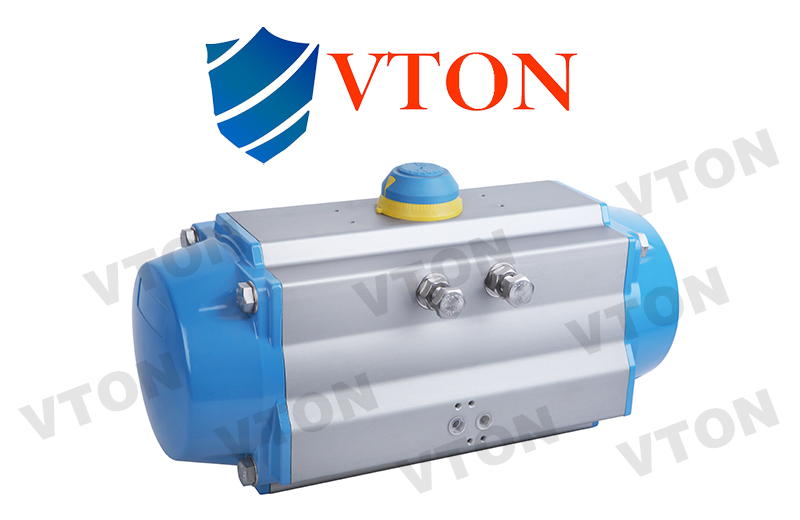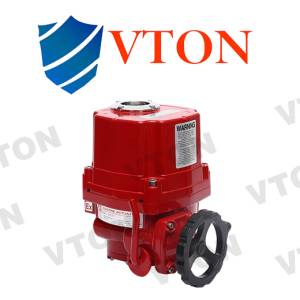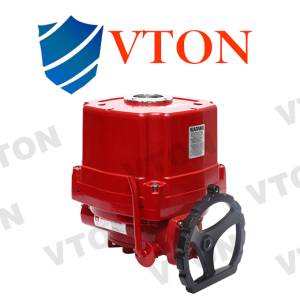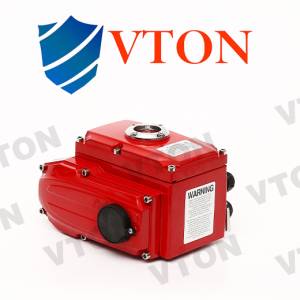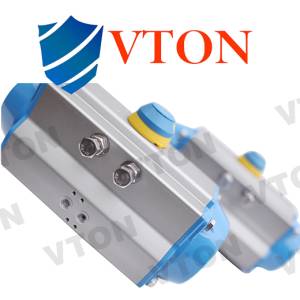Description
1. Overview of Single-Acting Pneumatic Actuator
Single-acting pneumatic actuators use air pressure to control valve operation and spring force for automatic reset when air is cut off. This design ensures fail-safe functionality, reducing risks in emergencies or air supply failures. Commonly used in hazardous environments, they are available in two configurations:
- Normally Open (NO): Opens when air is cut off, closes when air is supplied.
- Normally Closed (NC): Closes when air is cut off, opens when air is supplied.
2. Working Principle
When air pressure enters the actuator’s middle chamber, the pistons move outward, compressing the springs at both ends. This action rotates the output shaft (gear) counterclockwise. When the air supply is redirected, the springs push the pistons back to the center, rotating the shaft clockwise. The actuator’s design allows for reverse rotation by adjusting the piston assembly.
3. Technical Parameters
- Model: V-AT
- Body Material: Aluminum Alloy
- Air Supply Pressure: 2.5 ~ 8 Bar
- Switching Time: 0.5 ~ 8 seconds
- Torque Range: 3 ~ 13,000 Nm
- Compatible Valves: Butterfly valves, ball valves
- Accessories: Positioners, limit switches, air treatment units
4. Features
- Fail-Safe Design: Automatic spring return ensures safety in air supply failure.
- Durable Construction: Aluminum alloy housing provides strength and corrosion resistance.
- High Torque Output: Suitable for controlling large valves with significant torque requirements.
- Quick Response: Fast switching times ensure efficient operation.
- Customizable Safety Margins: Torque adjustments account for various media and operating conditions, ensuring reliable performance.
- Versatile Applications: Compatible with a wide range of valves and industrial accessories.
5. Selection Guidelines
When selecting a single-acting pneumatic actuator:
- Calculate the required torque for the valve and add a safety margin:
- Steam or non-lubricated liquids: +25%
- Non-lubricated slurry: +30%
- Dry gases: +40%
- Non-lubricated gas with particles: +60%
- Clean and low-friction lubricated media: +20%
- Match the required torque to the actuator’s output torque at the air supply pressure and spring reset torque.
Example Selection:
For a butterfly valve requiring 100Nm torque, with a 0.5MPa air supply and dry gas medium:
- Add 40% safety margin (100Nm × 1.4 = 140Nm).
- Select an actuator with a spring reset torque of approximately 148Nm and an air supply torque of 158Nm.
- Based on these specifications, choose model AT145 with 9 springs.
6. Additional Information
- Action Time Testing Conditions:
- Ambient temperature
- 90° stroke
- Solenoid valve with a 4mm diameter and Qn flow of 400L/min
- Air tube with 8mm inner diameter
- Clean and dry air supply at 0.6MPa
- No external load
- Weight Adjustments:
- The standard weight calculation includes 10 springs. Adjust weight based on the addition or removal of springs.


